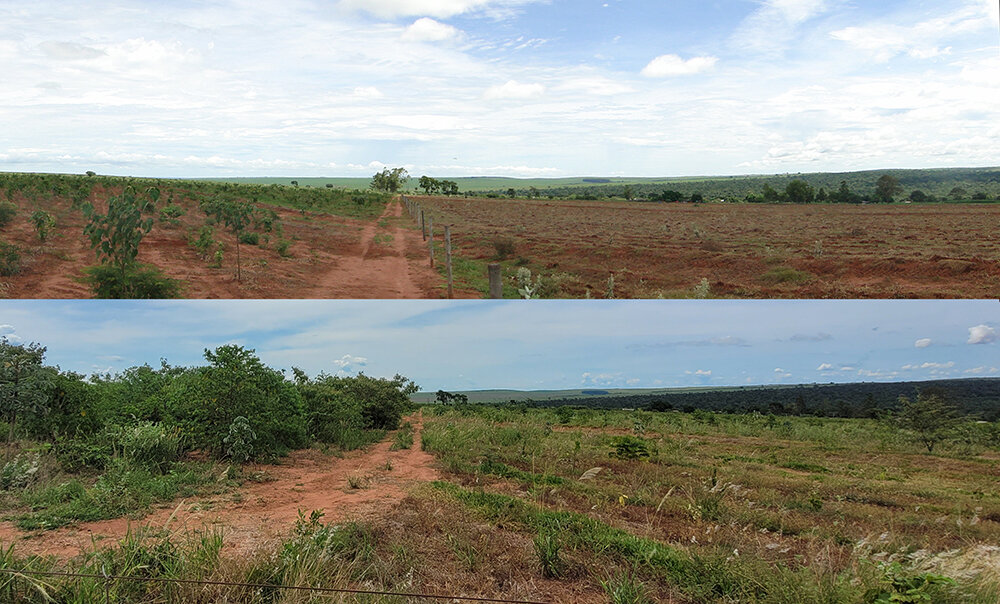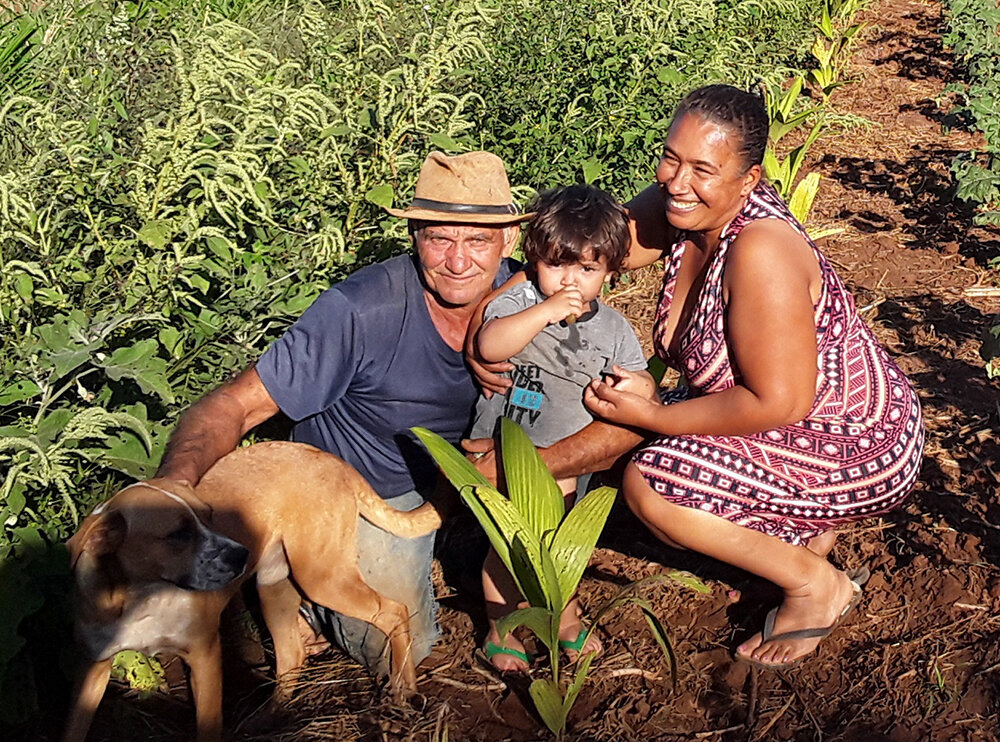By Vienna Leigh | Communications Manager, WeForest
This is the first update since we transformed our individual projects on GlobalGiving into Programmes, meaning that while your donations are continuing to protect and restore forests in your original projects, they’re also supporting new projects that use the same restoration techniques. As our ‘Earth Allies’, you’ll be supporting us to restore more land, grow more trees, and boost forest-friendly incomes for more families than ever before.
The images above show Estrela farm in the Pontal project’s north corridor, where 138 hectares of tree planting took place in May 2022 (the area on the left) and February 2023 (on the right). The top picture shows the view in early 2023, just after the area on the right was planted, and the bottom is the same view in January 2024. The results speak for themselves!
When we visited our Tietê Forests project with AES in April, students from Instituto Terra presented some great results from their monitoring of the Dandara agroforestry project. All of the farmers are happy with the project, and three-quarters of them are even applying agroforestry techniques in other parts of their farms! The survey found that before starting the project, the farmers' main motivations in joining were economic and well-being; after their agroforestry plots had been established, they also appreciated the added benefits of agroforestry systems: the importance of growing agro-ecological food in the rural settlement, and how collective activities during setup and maintenance strengthen the community.
Six of the 2022 agroforestry plots have started vegetable production, with an estimated 7 tons of produce harvested, mainly lemons, eggplants, scarlet eggplants and around 17 other species of vegetable. The farmers raised more than BRL 43,000 ($7800) from vegetable sales, with Rose and Donizete’s produce alone raising an astonishing BRL 28,164!
As for the Misiones project in Argentina, our partner FVS recently produced two great 20-minute videos that really give a feel for the landscape and the lives of the people living there.
In “STORIES OF RESTORATION - Water and dignity”, some of the farmers in San Pedro municipality who are working with FVS and WeForest talk about how the improved water supplies provided by the project have boosted their yields of yerba mate, as well as supporting the restoration of their farmland into forest patches. Watch it here. https://youtu.be/Lxq_9Ox068Y?si=_9BzNJLTbgbMbOMb
“STORIES OF RESTORATION - The entrepreneurs from Alegría Colony” tells the story of a group of women producers who set up a nursery to supply the project’s participating farmers with native tree seedlings for their agroforestry plots. Watch it here. https://youtu.be/k9WkobO9Jms?si=zQHbWE9dOGTh-p1h
Thank you for helping to make all this possible!
By Vienna Leigh | Communications Manager, WeForest
By Vienna Leigh | Communications Manager, WeForest
Project reports on GlobalGiving are posted directly to globalgiving.org by Project Leaders as they are completed, generally every 3-4 months. To protect the integrity of these documents, GlobalGiving does not alter them; therefore you may find some language or formatting issues.
If you donate to this project or have donated to this project, you can receive an email when this project posts a report. You can also subscribe for reports without donating.
Support this important cause by creating a personalized fundraising page.
Start a Fundraiser
